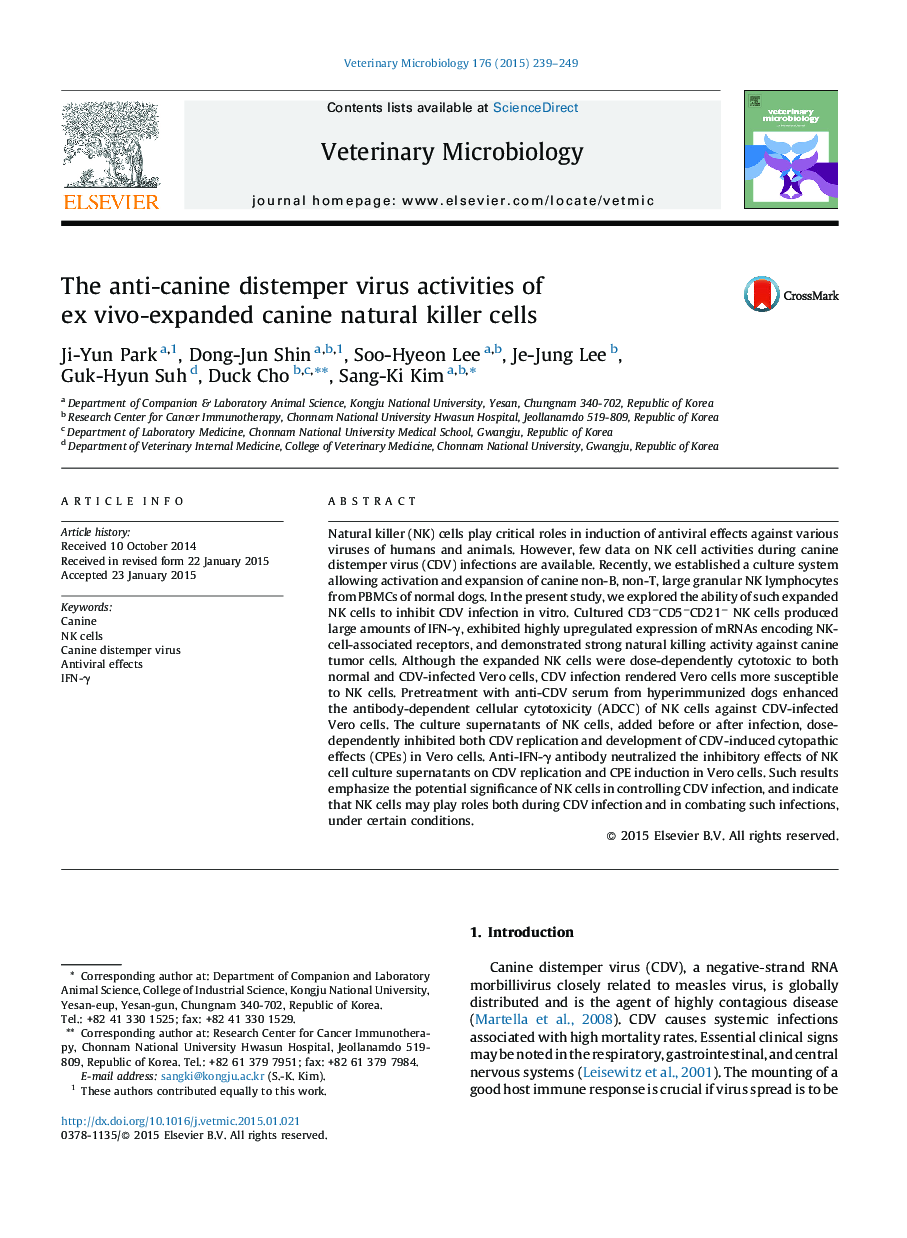| کد مقاله | کد نشریه | سال انتشار | مقاله انگلیسی | نسخه تمام متن |
|---|---|---|---|---|
| 5799989 | 1555352 | 2015 | 11 صفحه PDF | دانلود رایگان |

- We determined the anti-CDV activities of ex vivo expanded canine NK cells.
- NK cells showed potential significance in controlling CDV infection.
- Anti-CDV effect of NK cells was resulted from direct cytolysis and ADCC.
- IFN-γ produced by canine NK cells exerts important roles in anti-CDV effect.
Natural killer (NK) cells play critical roles in induction of antiviral effects against various viruses of humans and animals. However, few data on NK cell activities during canine distemper virus (CDV) infections are available. Recently, we established a culture system allowing activation and expansion of canine non-B, non-T, large granular NK lymphocytes from PBMCs of normal dogs. In the present study, we explored the ability of such expanded NK cells to inhibit CDV infection in vitro. Cultured CD3âCD5âCD21â NK cells produced large amounts of IFN-γ, exhibited highly upregulated expression of mRNAs encoding NK-cell-associated receptors, and demonstrated strong natural killing activity against canine tumor cells. Although the expanded NK cells were dose-dependently cytotoxic to both normal and CDV-infected Vero cells, CDV infection rendered Vero cells more susceptible to NK cells. Pretreatment with anti-CDV serum from hyperimmunized dogs enhanced the antibody-dependent cellular cytotoxicity (ADCC) of NK cells against CDV-infected Vero cells. The culture supernatants of NK cells, added before or after infection, dose-dependently inhibited both CDV replication and development of CDV-induced cytopathic effects (CPEs) in Vero cells. Anti-IFN-γ antibody neutralized the inhibitory effects of NK cell culture supernatants on CDV replication and CPE induction in Vero cells. Such results emphasize the potential significance of NK cells in controlling CDV infection, and indicate that NK cells may play roles both during CDV infection and in combating such infections, under certain conditions.
Journal: Veterinary Microbiology - Volume 176, Issues 3â4, 17 April 2015, Pages 239-249